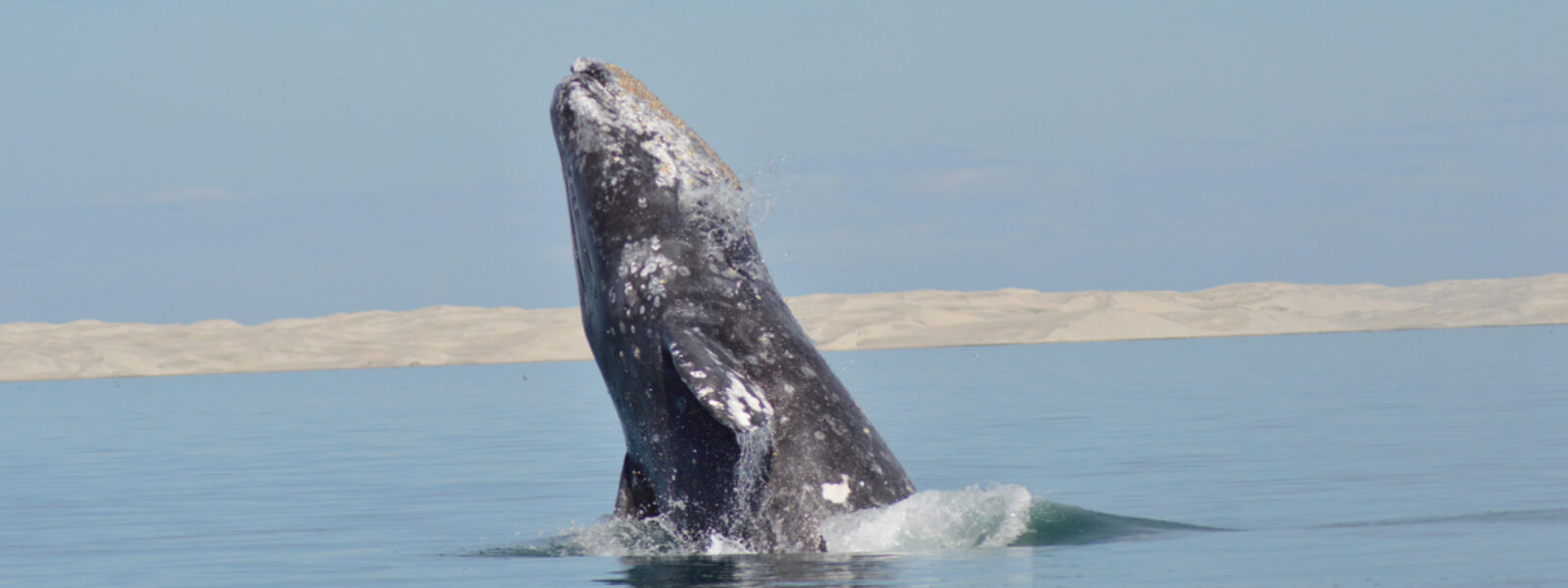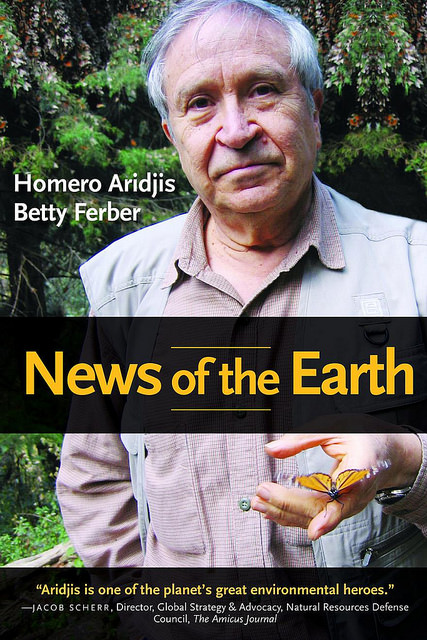
Defenders of Mexico’s Environment Chronicle Their Battle
Poet Homero Aridjis and Betty Ferber have spent a lifetime fighting to save endangered species and ecosystems in Latin America
In 1985, Mexico City was hit with some of the worst air pollution ever to choke a city. While the city receives plenty of sunlight, it is high in the mountains of central Mexico, surrounded by peaks that block the ability of winds to sweep away the air pollution. The ugly brown pall stayed for weeks.
One of Mexico’s greatest living poets, Homero Aridjis, was horrified and decided to do something about the dangerous air quality. He and his translator and wife Betty Ferber organized a group of one hundred personalities — leaders in Mexico in the arts, literature, culture and science. The Group of 100 (Grupo de los Cien) released a strong statement to the media against air pollution, calling on the Mexican government to take action to protect human health and the environment. Aridjis was the key author of the manifesto, and a major environmental movement in Mexico was born. Grupo de los Cien’s efforts would eventually lead to daily monitoring of air quality in Mexico City.
News of the Earth collects the many statements, letters, and newspaper columns written by Aridjis or about him and the Group of 100’s campaigns, chronicling the 35 years that he and Ferber have been in the forefront of environmental action in Mexico. The book highlights the many environmental battles and victories won for wild places and wildlife in that beautiful country, some of which had global implications, including campaigns to save monarch butterflies, gray whales, dolphins, and sea turtles.
This timely book also includes coverage of crucial aspects of Mexico’s historical and political relationship with the United States and the rest of the world. One of Aridjis’s most recent actions was a detailed proposal for constructing a solar border on the Mexican side.

Aridjis has written 49 books of poetry and prose, has served as Mexico’s ambassador to Switzerland, The Netherlands and UNESCO, and has been president of the Group of 100 since its founding. Many pieces included in News of the Earth are powerful articles Aridjis wrote for Mexican newspapers, denouncing threats to wildlife, ecosystems and human life in Mexico and Latin America and urging strong action to protect them.
As a boy, Aridjis would often walk up in the mountains near his home, marveling at the monarch butterflies clustered in the thousands upon thousands in trees during the winter. Defense of the monarch butterfly and its fragile habitats is his signature issue. Monarchs migrate some 3,000 miles from the US and Canada all the way to southwestern Mexico every year to overwinter.
They head back north in March. Their return journey, however, takes monarchs as many as four or five generations and all of spring, summer, and fall to complete, and then the great-great-great-grandchildren of the butterflies who overwintered in Mexico the previous season fly to the same high-altitude mountains for the next winter.
But forests visited by the butterflies in Mexico are routinely targeted by loggers and local farmers, who cut down the oyamel fir trees where the monarchs roost during the winters months. Starting in 1986, when Aridjis asked Mexico's president to decree official protection for the oyamel forests where the monarchs overwinter, Aridjis, Ferber, and the Group of 100 embarked on a decades-long campaign to protect the monarch forests in Mexico, also urging the US and Canada to reduce the spraying of herbicides that have severely reduced the availability of milkweed, the only plants that Monarch caterpillars eat, in the corn belt of central North America.
Their campaign has been successful in convincing the government to expand the core and buffer zones of the Monarch Butterfly Biosphere Reserve in 2000 from their original 62 square miles to 217 square miles, and they continue to press for better monitoring and enforcement of logging restrictions. They further make many recommendations on controlling access to the monarch sanctuaries so the tourists who come to see the butterflies don’t damage the areas in their enthusiasm.
The book also details Aridjis and Ferber’s campaign seeking protection for the beaches where the turtles lay their eggs that ended the commercial killing of sea turtles in Mexico. There are now several grassroots organizations in Mexico that support sea turtle beaches, protecting their eggs from poachers and bringing the newly hatched sea turtles to the ocean to bolster the endangered populations.
Earth Island’s International Marine Mammal Project, where I am associate director, worked closely with Aridjis and Ferber during their major fight over a planned industrial salt plant that would have been built on San Ignacio Lagoon — the most pristine of the gray whale lagoons in Baja California. Production of salt on the shores of the lagoon would have had catastrophic impacts on the birthing whales, the surrounding desert lands and on the local people in the region. The fight was a bitter one. At one point, Aridjis was forced to accept bodyguards provided by the federal government due to anonymous threats to him and his family. Murder of environmentalists is all too common in Latin America.
After a five-year campaign, the president of Mexico eventually cancelled the salt plant, and today the local fishermen act as guides for hundreds of tourists who visit San Ignacio Lagoon to see these huge marine mammals giving birth to new generations of gray whales.
Time after time, new development pressures in Mexico have threatened the national heritage of the country. And time after time, Aridjis, Ferber, and the Group of 100 have stood against the forces that would ignore the environmental damage that development projects can wreak.
“We are at a critical moment for the Earth,” Aridjis notes in the book. “Climate change, the precipitous loss of biodiversity, and shrinking water, forest, and fishing resources threaten the survival of life as we know it. There are those who argue that resources must be sacrificed to combat poverty, but that would amount to squandering the present at the expense of the future.”
News of the Earth is an important and well-put together book that gives a detailed account of all that has been achieved to protect Mexico’s and the world’s biodiversity and ecosystems, and makes a call to do much more. This compendium of Aridjis’s eloquent and informed defense of nature should be read by everyone who is concerned for the future of our planet.
